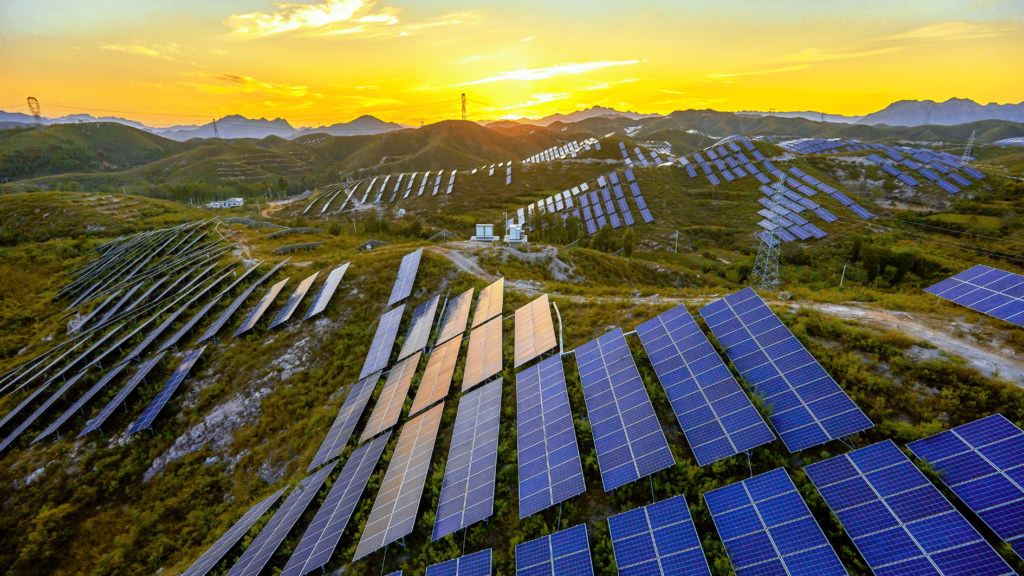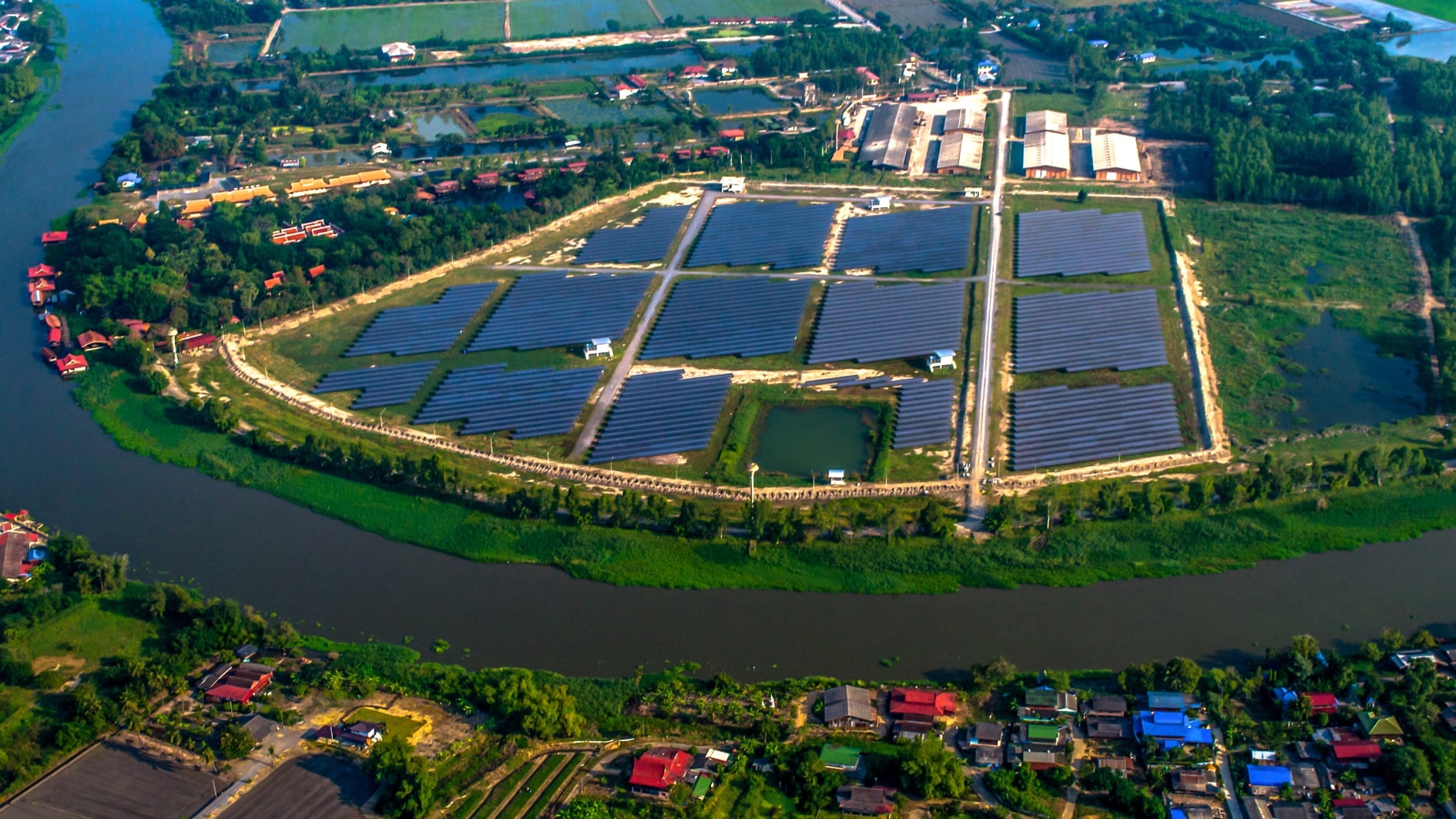Image source: Canva.com
Over the last decade, the solar sector has experienced exponential growth, driven by both individuals and businesses seeking to harness clean energy. A key catalyst for this expansion has been the proliferation of solar farms worldwide. As various avenues to adopt solar energy continue to evolve, aimed at curbing greenhouse gas emissions and mitigating climate change, navigating this dynamic landscape can be overwhelming, often leaving questions unanswered. This article aims to demystify solar farm types, and associated costs, and guide you on locating one in your vicinity.
What Constitutes a Solar Farm?
A solar farm, also known as a solar garden or a photovoltaic (PV) power station, encompasses a vast solar array designed to convert sunlight into energy, which is subsequently fed into the electricity grid. Numerous expansive ground-mounted arrays are owned by utilities, serving as additional resources for supplying power to properties within their coverage area. These solar farms often comprise thousands of solar panels. Alternatively, there are community solar projects, housing hundreds of solar panels, offering a viable option for households unable to install solar panels on their property.
Solar Farm Varieties
Across the nation, two primary categories of solar farms prevail utility-scale and community solar farms. The fundamental distinction lies in their clientele—utility-scale solar farms supply solar-generated electricity directly to public utilities, while community solar farms cater directly to end-users of electricity, including homeowners and renters.
Utility-Scale Solar Installations
Utility-scale solar installations, commonly known as solar power plants, are expansive solar farms owned by utility companies. These installations feature numerous solar panels and feed electricity directly into the grid. The power generated at these farms is typically sold to wholesale utility buyers through power purchase agreements (PPAs) or directly owned by electric utility companies, depending on the geographic location. Regardless of the specific arrangement, the primary recipient of the solar power is a utility, which subsequently distributes the generated electricity to residential, commercial, and industrial customers interconnected with the grid.
Community Solar Initiatives
In recent years, community solar initiatives have surged in popularity, enabling households to adopt solar energy without the need for rooftop panels. A community solar farm, also known as a “solar garden” or “roofless solar,” generates electricity shared among multiple households. Typically, these solar arrays are ground-mounted installations spanning one or more acres, commonly situated in open fields.
While visually akin to utility-scale solar farms, community solar farms are often smaller in scale. Participants have the option to either purchase a share of the solar array, become partial owners, or lease energy from the system. This arrangement allows them to replace their conventional monthly utility payments with lower-priced monthly community solar payments.
Moreover, in many states, participants in community solar programs can benefit from virtual net metering. This incentive permits surplus energy generated by solar panels to be credited back to subscribers, thereby reducing their electricity bills.

Pros and Cons of Solar Farms
Advantages:
1. Environmental Sustainability: Establishing or participating in a solar farm offers an opportunity to save money, reduce carbon footprint, and leverage evolving solar technology. Solar energy, abundant and easily accessible, does not generate harmful by-products and is essentially inexhaustible.
2. Low Maintenance: Advances in solar panel technology have led to minimal maintenance requirements. Panels are constructed from durable materials, engineered to withstand environmental stressors, and typically demand only occasional cleaning.
3. No Upfront Costs for Community Solar: Subscribing to a community solar farm usually entails no initial investment. This makes it an attractive option for renters, individuals with unsuitable roofs, or those seeking to avoid the expense of rooftop solar installations.
Disadvantages:
1. High Initial Investment for Property Owners: The establishment of commercial or residential solar farms involves substantial upfront expenses. Property owners venturing into solar farming can anticipate initial costs ranging from $800,000 to $1.3 million. However, significant returns on investment are possible, with potential annual earnings of up to $40,000 from selling electricity in a 1MW solar farm.
2. Land Requirement: Solar farms typically necessitate extensive land, approximately five to seven acres, to accommodate solar arrays and associated infrastructure. Construction of a solar farm may also require up to five years to complete.
3. Costly Energy Storage: Solar panels operate solely during daylight hours, necessitating energy storage solutions such as batteries to store excess energy for later use. While this incurs additional expenses, subscribers and owners can benefit financially by selling surplus energy back to the grid through net metering, contingent on location.
What is the Cost of a Solar Farm?
If traditional rooftop solar isn’t suitable for your needs, joining a community solar farm might be an attractive alternative. Unlike the upfront investment required for rooftop solar panels, signing up for a community solar farm typically involves no initial costs. Once enrolled, you can anticipate saving approximately 5 to 15 percent on your electric bill.
In terms of construction expenses, solar farms are considerably cheaper per watt compared to residential solar panel installations. While residential setups average around $2.86 per watt, building a solar farm can range between $0.80 and $1.30 per watt. Depending on the scale, solar farm costs typically range from $800,000 to over 1.3 million dollars – a significant increase compared to the average residential installation cost of $20,020. However, utility-scale solar panel farms are usually at least one megawatt (MW) in size, capable of providing electricity to approximately 200 households.

Constructing a Solar Farm: An Overview
When developers contemplate the construction of a solar farm, whether it’s a modest 50 kW array or an expansive 50+ MW project, several pivotal questions arise:
1. Land Requirements: Determining the acreage necessary for the power plant size is crucial. While smaller solar farms may suffice with just a few acres, large utility-scale projects could demand thousands of acres, akin to the Bhadla Solar Park.
2. Electrical Connectivity: Assessing the feasibility of connecting the array to the power grid or a centralized power source entails considering the proximity of the land to power lines and electrical panels.
3. Maintenance Strategy: Establishing a plan for cleaning and maintaining the plant is imperative. Factors such as the availability of water sources or cleaning mechanisms play a vital role in ensuring the efficiency of solar panels, especially for ground-level installations. For instance, the Bhadla Solar Park employs solar-powered robots for continuous cleaning.
4. Panel Quantity: Calculating the number of solar panels required involves starting with the anticipated energy demand and working backward. This process necessitates determining the area’s solar panel production ratio to gauge the energy output of specific panel wattages accurately.
5. Cost Assessment: Estimating a reasonable price for the solar installation is crucial. For large-scale projects, significant variations in quotes from different contractors are expected, underscoring the importance of soliciting bids from multiple companies.





